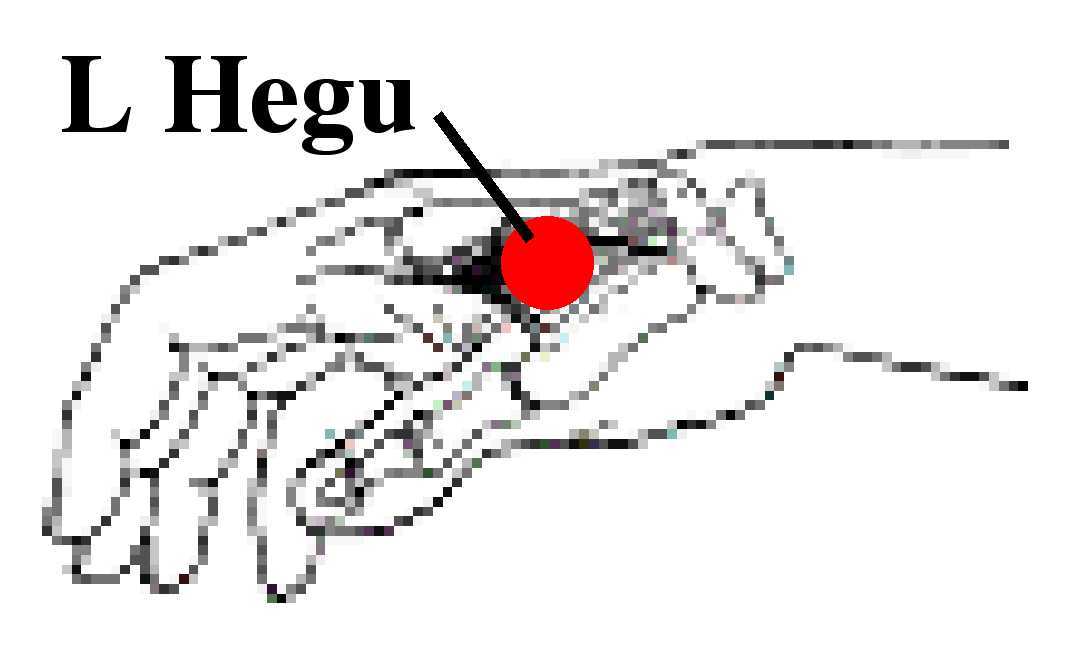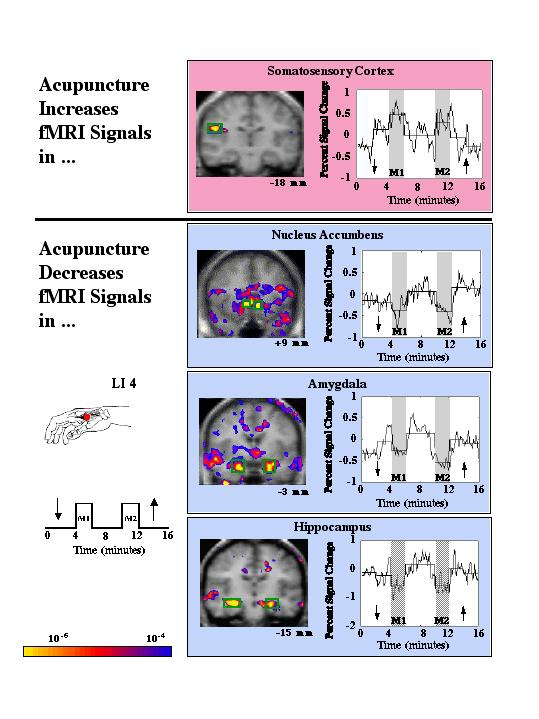

Ancient therapeutic techniques, such as acupressure and acupuncture are emerging as an important modality of complementary medicine in the United States. Currently curriculum for western medical schools is being updated to include courses on acupoints and meridian theory at the request of current and incoming medical students. The project at the Gollub Lab demonstrates regionally specific, quantifiable effects on relevant structures of the human brain, providing western style explanations for what may be a mechanism for meridian theory and acupoint stimulation's effectiveness and systemic impact.
We used functional magnetic resonance imaging (fMRI) to investigate the effects of acupuncture in normal subjects and to provide a foundation for future studies on mechanisms of acupuncture action in therapeutic interventions. Acupuncture needle manipulation was performed at Large Intestine 4 (LI 4, Hegu, Figure 1. below) on the hand in 13 subjects.
Needle manipulation on either hand produced prominent decreases of fMRI signals in the nucleus accumbens, amygdala, hippocampus, parahippocampus, hypothalamus, ventral tegmental area, anterior cingulate gyrus (BA 24), caudate, putamen, temporal pole, and insula in 11 subjects who experienced acupuncture sensation (Figure 2b).
In marked contrast, signal increases were observed primarily in the somatosensory cortex (Figure 2a). The two subjects who experienced pain instead of acupuncture sensation exhibited signal increases instead of decreases in the anterior cingulate gyrus (BA 24), caudate, putamen, anterior thalamus and posterior insula. Superficial tactile stimulation to the same area elicited signal increases in the somatosensory cortex as expected but no signal decreases in the deep structures.
Figure 1.

Figure 2.
